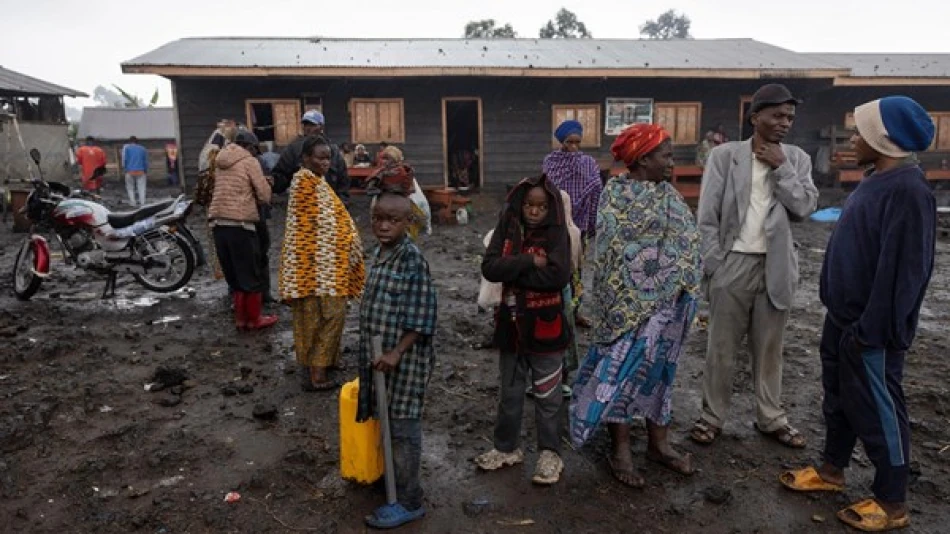
Deadly Attack Strikes Congolese Church, Death Toll Rises
Congo Church Massacre Exposes Eastern Region's Deepening Security Crisis
A brutal attack on a Catholic church in eastern Democratic Republic of Congo has claimed 43 lives, highlighting the deteriorating security situation in a region where armed groups continue to terrorize civilians with impunity. The coordinated assault in Ituri province represents another devastating blow to communities already struggling under decades of conflict and weak state control.
Coordinated Attack Targets Worshippers and Civilians
The violence unfolded in two phases in the village of Komanda, located in northeastern Ituri province. Police officer Alphonse Liko confirmed that gunmen first stormed the Catholic church during prayer services, stabbing 20 worshippers to death in a calculated act of brutality.
The attackers then expanded their assault beyond the church walls, setting fire to homes and commercial buildings throughout the area. During this second wave of violence, at least 23 additional civilians were killed, bringing the total death toll to 43—an increase from earlier reports of 35 fatalities.
Community leader Lusa Dekana revealed another disturbing dimension of the attack: "They took several people into the jungle, and we don't know their destination or their number." This suggests the violence may have included kidnappings, a common tactic used by armed groups in the region to extract ransom or recruit fighters.
Allied Democratic Forces: A Persistent Regional Threat
Authorities believe the Allied Democratic Forces (ADF) orchestrated both attacks. The group, originally formed in Uganda in the 1990s, has established a significant presence in eastern Congo's dense forests, where it operates with relative freedom despite ongoing military operations against it.
The ADF has evolved from its origins as a Ugandan rebel movement into a more complex organization that has pledged allegiance to the Islamic State, though experts debate the extent of operational coordination between the groups. What remains clear is the ADF's consistent pattern of targeting civilians, particularly in Ituri and neighboring North Kivu provinces.
Tactical Brutality and Symbolic Targeting
The attackers came armed with both firearms and machetes, traveling approximately 12 kilometers from their stronghold to reach Komanda's center. This combination of weapons—modern and traditional—reflects the group's tactical approach of maximizing terror through both efficiency and brutality.
Video footage circulated online showed the aftermath: burned buildings, bodies scattered inside the church, and survivors alternating between tears of recognition and stunned silence. The targeting of a religious site during worship services appears designed to maximize psychological impact on the broader community.
Eastern Congo's Governance Vacuum
The Komanda massacre underscores the Congolese state's ongoing inability to protect civilians in its eastern territories. Despite the presence of both Congolese armed forces and the United Nations' MONUSCO peacekeeping mission, armed groups continue to operate across vast swaths of territory.
The attackers' successful retreat before security forces arrived highlights a familiar pattern: armed groups strike with devastating effect against soft targets, then melt back into forest strongholds where pursuit becomes difficult and dangerous.
Regional Implications for Stability
Ituri province has experienced cyclical violence for over two decades, with various armed groups exploiting ethnic tensions and competing for control over gold mines and agricultural land. The ADF's presence adds an additional layer of complexity, as the group appears less motivated by local grievances and more focused on establishing territorial control for broader strategic purposes.
This dynamic creates challenges not only for Congo but for regional stability, as violence frequently spills across borders and displaces populations into neighboring countries. Uganda, in particular, has conducted cross-border operations against ADF positions, though these efforts have yet to significantly degrade the group's capabilities.
International Response and Long-term Challenges
The international community faces difficult choices in responding to eastern Congo's persistent insecurity. Traditional peacekeeping approaches have shown limited effectiveness against groups like the ADF that deliberately target civilians and operate from remote forest bases.
The Komanda attack will likely renew calls for more robust international intervention, but previous escalations in military pressure have often resulted in armed groups adapting their tactics rather than abandoning their activities entirely. The challenge lies in developing comprehensive approaches that address both immediate security threats and underlying governance weaknesses that allow such groups to flourish.
For Congo's government, the massacre represents another test of its ability to extend meaningful state authority beyond major urban centers—a challenge that has persisted through multiple presidential transitions and remains central to the country's long-term stability prospects.
 Layla Al Mansoori
Layla Al Mansoori







